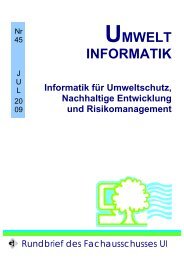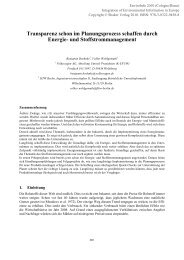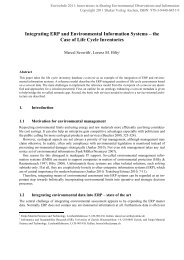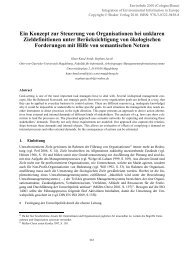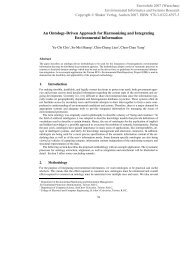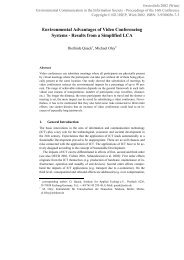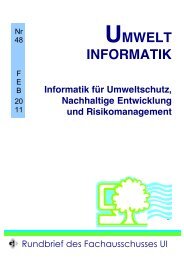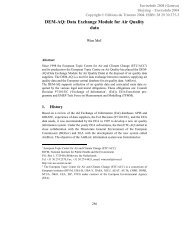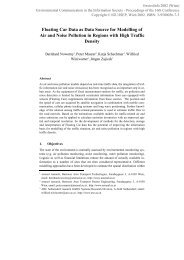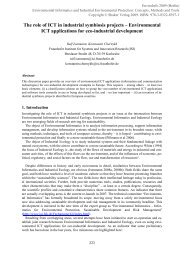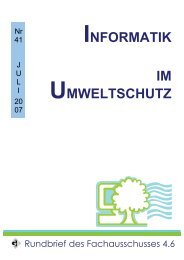A GIS-based Route Mapping Tool for Disabled Access in Urban ...
A GIS-based Route Mapping Tool for Disabled Access in Urban ...
A GIS-based Route Mapping Tool for Disabled Access in Urban ...
You also want an ePaper? Increase the reach of your titles
YUMPU automatically turns print PDFs into web optimized ePapers that Google loves.
165The start<strong>in</strong>g <strong>for</strong>ce was, as would be expected, always the highest recorded <strong>for</strong>ce <strong>for</strong>all surfaces. This measure is weight dependant. It was, however, found to be a veryimportant measure, with uneven surfaces caus<strong>in</strong>g the wheelchair to be slowed downand <strong>in</strong> some cases brought to a halt. The range of measured <strong>for</strong>ce was there<strong>for</strong>e acrucial measure, provid<strong>in</strong>g a good <strong>in</strong>dicator <strong>for</strong> surface roughness. The results reflectedthe questionnaire and focus group responses.Dropped kerbs provide cross<strong>in</strong>g po<strong>in</strong>ts <strong>for</strong> wheelchairs across roads and consequentlyhad been identified as be<strong>in</strong>g extremely important to allow<strong>in</strong>g movementaround an urban area. A total of n<strong>in</strong>e factors were identified as be<strong>in</strong>g required to assessa drop kerb and <strong>in</strong>cluded: height, surface, slope, camber, width, orientation,curvature, with bullnose and brickrunners. Collation of this <strong>in</strong><strong>for</strong>mation enabled acomprehensive and efficient method of rank<strong>in</strong>g drop kerbs.The rema<strong>in</strong><strong>in</strong>g urban features to be <strong>in</strong>cluded <strong>in</strong> the digital database (e.g. the locationof steps, ramps and cambers) required only mapp<strong>in</strong>g by location, rather thanquantify<strong>in</strong>g. Many of the urban features were gathered <strong>in</strong> the field, us<strong>in</strong>g a palmcomputer runn<strong>in</strong>g ArcPad <strong>GIS</strong>. This provided an efficient method of mapp<strong>in</strong>g thedata and reduced the error that can often occur dur<strong>in</strong>g data conversion.Initially, a network coverage represent<strong>in</strong>g pedestrian routes around the town centrewas derived us<strong>in</strong>g Ordnance Survey Land-L<strong>in</strong>e data - an enhanced vector dataset, where features are represented as po<strong>in</strong>ts and l<strong>in</strong>es that are digitised and specificallycoded to show 37 layers. A number of issues arise when attempt<strong>in</strong>g to demarcatepavements as a range of different features def<strong>in</strong>es pavement edges (e.g. build<strong>in</strong>goutl<strong>in</strong>es, walls, road edges). In order to provide consistency, pavement centrel<strong>in</strong>eswere manually extracted us<strong>in</strong>g the Ordnance Survey Land-L<strong>in</strong>e data as a backdrop.This removed the need to alter the orig<strong>in</strong>al data whilst allow<strong>in</strong>g the designer to uselocal knowledge to derive a network that best represented the general flow of pedestriansaround the town centre. Us<strong>in</strong>g the Dynamic Segmentation module <strong>in</strong>ARC/INFO ® , l<strong>in</strong>ear measurements were used to def<strong>in</strong>e locations along l<strong>in</strong>ear features.All urban barriers were then associated with the correct measurement along theroute, def<strong>in</strong>ed as l<strong>in</strong>ear measures (e.g. pavement surface) or po<strong>in</strong>t events at measuredlocations (e.g. steps). The routes were assigned a direction along which the measurementsare made, thus, each route must be labelled twice s<strong>in</strong>ce some of the barriersare direction dependent (e.g. slope). The drop kerbs were then stored as turntabledata, thereby allow<strong>in</strong>g the direction of traverse to be significant. Stor<strong>in</strong>g the data us<strong>in</strong>gdynamic segmentation means that the data is stored as a tabular database. Datacan be updated without alter<strong>in</strong>g the network topology.3. Model developmentMAGUS (Modell<strong>in</strong>g <strong>Access</strong> with <strong>GIS</strong> <strong>in</strong> <strong>Urban</strong> Systems) is built entirely with<strong>in</strong>ESRI ArcView ® <strong>GIS</strong>, us<strong>in</strong>g AVENUE programm<strong>in</strong>g language and Dialog De-Copyright © IGU/ISEP, Wien 2002. ISBN: 3-9500036-7-32504 EI P 906 I2 BealeL.doc 29.08.02





